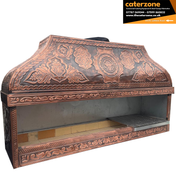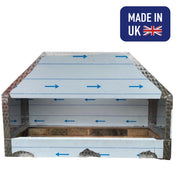Restaurant owners are no longer able to freely set prices on their menus. They now have to take into account all the costs of running their kitchen. For this reason, they will have to take into account the return on investment of their kitchen equipment.
Caterzone is aware of the challenges that restaurant owners are facing today. Restaurant owners need to find a new way to price their menus. Caterzone’s equipment is an essential tool to analyse when pricing a restaurant menu.
Successful restaurants know that the performance of their equipment is a determining factor in the prices they charge. Equipment ROI is therefore crucial. An intelligent analysis of the ROI will have to be done on factors such as energy consumption, maintenance and performance.
This article will guide restaurateurs in using equipment efficiency to optimise their pricing. Managers will learn how to balance operational costs with pricing in the face of customer expectations.
The Impact of Kitchen Equipment on Menu Pricing
Commercial kitchen operations are forced to walk a fine line between efficiency and profitability. The correlation between kitchen equipment and food costs is therefore critical to a successful menu.
Energy Consumption Analysis in Commercial Kitchens
- Total energy consumption per cooking unit
- Peak consumption periods
- Kitchen equipment energy efficiency ratings
- Cost saving potential through strategic equipment investment
Equipment Performance Impact on Food Cost
- Shorter cooking times
- Optimised energy use
- Improved overall kitchen efficiency
- Decreased ingredient wastage
Equipment Lifecycle and Operational Costs
Analysing the total cost of ownership of kitchen equipment is key to menu pricing and planning. Restaurants must anticipate maintenance, replacement and energy costs in the medium to long term.
Calculating Equipment Running Costs
- Monitor monthly energy consumption
- Track energy and gas use with monitoring systems
- Calculate total operating hours of equipment
- Assess consumption per equipment type
Incorporating Maintenance Costs into Pricing
- Document scheduled maintenance
- Forecast annual repair and replacement expenses
- Allocate a percentage of equipment costs to menu pricing
- Conduct quarterly pricing reviews and adjustments
Energy Usage Metrics and Price Adjustments
Using energy usage metrics allows managers to set intelligent prices based on actual data. Caterzone’s equipment provides precise energy monitoring, enabling informed pricing decisions.
Optimising Kitchen Equipment ROI through Strategic Pricing
Profit margins are key metrics to consider when factoring in equipment ROI. Strategic pricing should incorporate:
- Energy consumption
- Repair costs
- Efficiency improvements
- Equipment longevity
Designing a Sustainable Pricing Model
Equipment Depreciation Insights
- Annual depreciation rates
- Replacement costs in long-term planning
- Evaluation of economic lifecycle
Balancing Equipment Costs and Profit Margins
- Evaluate current consumption
- Compare savings with efficient equipment
- Adjust menu pricing accordingly
- Factor long-term cost savings
Conclusion
Optimising costs on restaurant menus requires linking kitchen equipment performance to financial strategies. By factoring in ROI, efficiency and long-term costs, restaurants can build sustainable pricing models that balance profitability with customer satisfaction.
FAQ
How does equipment efficiency and energy consumption affect menu pricing?
Equipment efficiency determines operational costs. Energy-efficient equipment reduces costs, enabling more competitive menu pricing.
What are the main factors to consider when calculating the running costs of equipment?
Purchase cost, energy consumption, maintenance expenses, cooking speed, wastage and lifespan all impact menu pricing.
How can restaurants factor in equipment depreciation into their menu pricing?
Amortising equipment cost over its useful life allows for gradual cost recovery, ensuring stable menu pricing and future investment planning.
What metrics are important for evaluating kitchen equipment energy efficiency?
Total energy consumption, cooking performance, operational costs and benchmarking against similar equipment are critical metrics.
How often should restaurants review their equipment-based pricing strategies?
Quarterly and annual reviews help restaurants adjust to changes in costs and market conditions.
Can energy-efficient equipment truly enhance a restaurant’s profit margins?
Yes, by reducing costs and improving efficiency, energy-efficient appliances improve profit margins over time.
What is the role of technology in monitoring kitchen equipment efficiency?
Sensors and monitoring systems allow restaurants to track energy consumption and make informed pricing decisions.
How can small restaurants with limited budgets approach equipment efficiency?
Start with the most energy-intensive equipment, consider leasing, and invest in affordable energy-efficient models.
What are the environmental benefits of investing in energy-efficient kitchen equipment?
Lower carbon footprint, compliance with green standards, and appeal to environmentally conscious customers.
How do maintenance practices impact equipment efficiency and menu pricing?
Good maintenance prevents loss of efficiency, reduces breakdowns, extends equipment life and stabilises costs for menu pricing.



